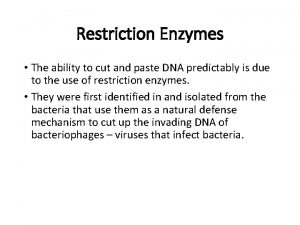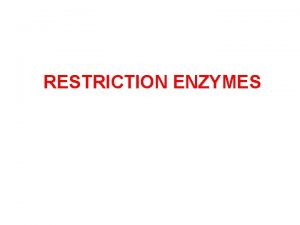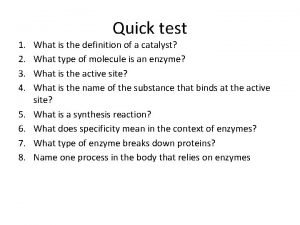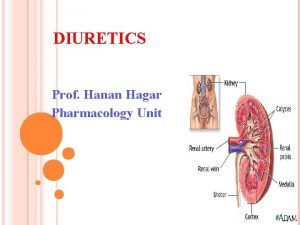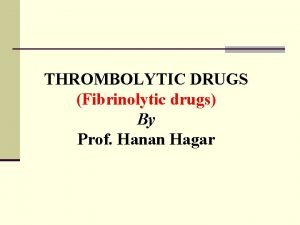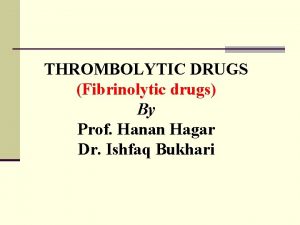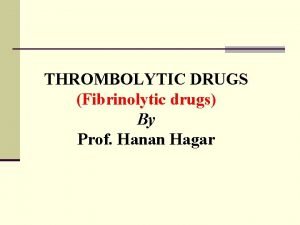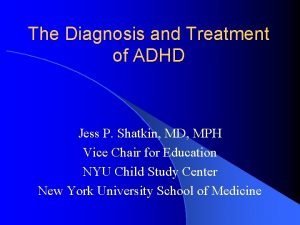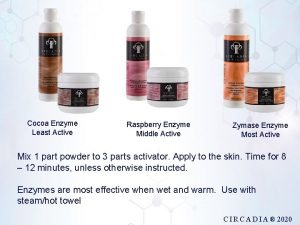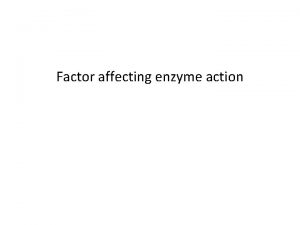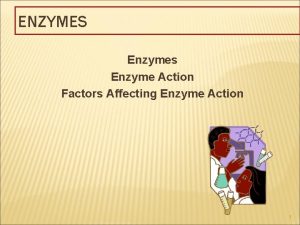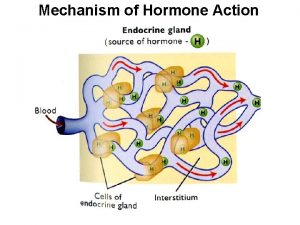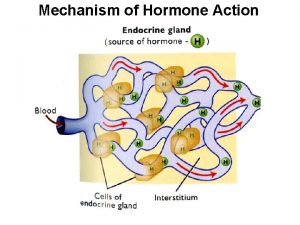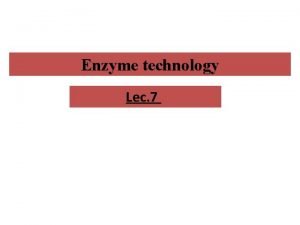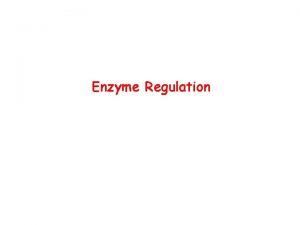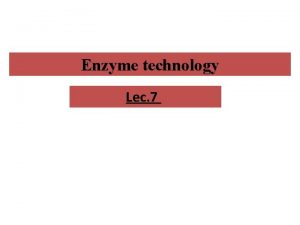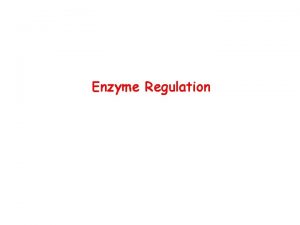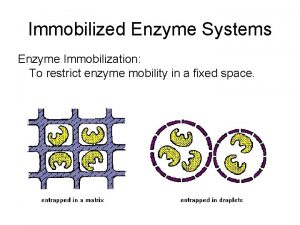Mechanism of enzyme action and enzyme unit Active











- Slides: 11

Mechanism of enzyme action and enzyme unit

Active Site • Small region at which the substrate binds and participate in catalysis

Characteristic It consist of two parts. (a) Catalytic site. It is the portion (part) of the enzyme that is responsible for catalysis & determine reaction specificity (b) Binding site. It is the part of the enzyme that binds with substrate and determines substrate specificity Clefts/crevices within the enzyme molecule consists of few amino acid residues only three dimentional

The active site is contributed by amino acid residues that are far apart in the enzyme molecule The amino acids at the active site arranged in a very precise manner so that only specific substrate can bind at the active site Active site is flexible not rigid in shape & structure Substrate binds at active site by weak non covalent bonds Usually serine, histidine, cysteine, aspartate or glutamate residues make up active site. Enzymes are named according to the active site amino acid. For example, trypsin is a serine protease and papain is cysteine protease

Reaction Rates and the Transition State Enzymes speed up reactions enormously. To understand how they do this, examine the concepts of activation energy & the transition state. In order to react, the molecules involved are distorted, strained or forced to have an unlikely electronic arrangement. That is the molecules must pass through a high energy state.

This high energy state is called the transition state The energy required to achieve it is called the activation energy for the reaction. The higher the free energy change for the transition barrier, the slower the reaction rate.

Enzymes lower energy barrier by forcing the reacting molecules through a different transition state. This transition state involves interactions with the enzyme. Enzyme

• Reaction intermediate--- transient chemical species • Rate limiting step • Lowering activation energy is by binding energy

Modes of Enzymatic Enhancement of Rates 1) general acid and general base catalysis-- good proton donors & acceptors positioned just right. 2) covalent catalysis- unstable intermediate – cysteine, serine, histidine 3) metal ion catalysis - electron donor or acceptor

Models of Enzymatic reaction Lock & Key Model- Fischer induced fitfit enzyme changes its conformation to accept the transition state of substrate/product well. Enzyme conformational change works to distort and strain substrate forcing it into transition state Simultaneous Koshland Substrate strain theory

Enzyme Units • Expressed in terms of the activity • One International Unit- the amount of Enzyme that catalyzes the formation of 1 micromole of product in 1 minute • Katal- amount of enzyme catalyzing the conversion of 1 mole of substrate to product in 1 second • 1 katal = 6 X 107 international units
 Mechanism of restriction enzyme
Mechanism of restriction enzyme Restriction fragment length polymorphism
Restriction fragment length polymorphism Enzyme substrate active site diagram
Enzyme substrate active site diagram Diuretics classification and mechanism of action
Diuretics classification and mechanism of action 3 to 8 decoder truth table
3 to 8 decoder truth table Membrane structures that function in active transport
Membrane structures that function in active transport Glipizide mechanism of action
Glipizide mechanism of action Heliox mechanism of action
Heliox mechanism of action Thrombolytic medication
Thrombolytic medication Thrombolytic drugs mechanism of action
Thrombolytic drugs mechanism of action Fibrinolytic drugs
Fibrinolytic drugs Methylphenidate vs adderall mechanism of action
Methylphenidate vs adderall mechanism of action
